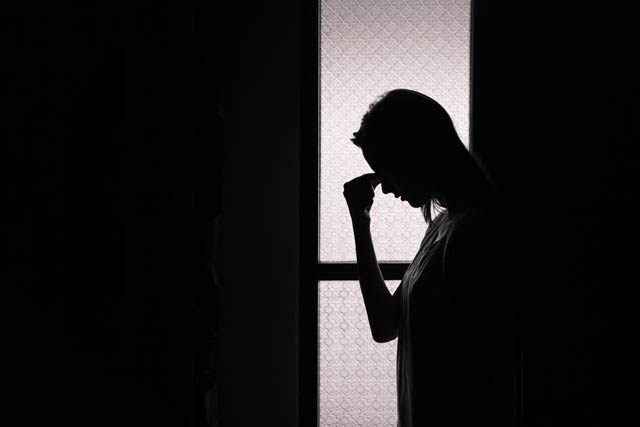
The use of women’s sexuality to diminish their place in the public sphere through restricted access to reproductive healthcare has rightly been called a war on women. Notoriously, former Missouri representative Todd Akin, during his unsuccessful 2012 U.S. Senate campaign, explained his opposition to abortion in cases of rape by saying, “if it’s legitimate rape, the female body has ways to shut that whole thing down.”
More recently, possible 2016 Republican presidential candidate Mike Huckabee endorsed his party’s opposition to insurance coverage for contraception as reflective of its certainty that women “can control their libidos.”
Importantly, the legislative consequences of such sentiments amount not only to a war on women generally but, cumulatively, to a war on poor women specifically. This expresses itself in two related ways. First, many of the obstacles that now impede access to abortion make it more expensive, which disproportionately affects women of lesser financial means. Second, statewide campaigns to ostensibly end abortion have led to the closure of numerous women’s health centers, a primary source of care for poor women.
A signal achievement of Second Wave Feminism was the extension to poorer women of greater access to a full range of healthcare, frequently with the assistance of federal and state financial support. Across the country, women’s health centers have met a critical need for low-income patients in the arena of reproductive health. But as in so many other areas of social policy in recent years, dwindling political support for public programs is felt most acutely by those most in need.
Since 2011, state legislatures across the country, especially in middle and southern states, have enacted a combined 231 restrictions on abortion and the facilities that provide them, even though abortions actually constitute a small percentage of the health services offered at women’s clinics (only 3 percent at Planned Parenthood). Rather, care mostly involves pregnancy prevention, testing for sexually transmitted diseases, annual gynecological exams, and cancer screenings. For many poor women, these clinics provide their only means to obtain such medical treatment. Lack of reproductive healthcare for these women has become yet another cost of poverty in an unequal nation where the have-nots continue to expand.
These various state laws include mandatory counseling and/or waiting periods prior to an abortion; restrictions or outright bans on insurance coverage for abortions, including insurance acquired through the marketplace exchanges associated with the Affordable Care Act or through Medicaid; and what has become known as targeted regulation of abortion providers, or TRAP.
In the name of protecting women’s health, some TRAP laws require that abortion providers must have admitting privileges at a local hospital, which is not always granted, while others mandate that facilities that offer abortions meet the same standards as ambulatory surgical centers, despite the well-documented safety of abortion procedures in a clinic setting. All of this amounts to logistical and cost-prohibitive measures that frequently result in a women’s health center closing.
As a result of TRAP laws in Texas, the nation’s second most populous state, for example, the number of facilities that provide abortion has declined by half since late 2013. And most recently in the Lone Star State the Senate, in a not-so-thinly-veiled attempt to shutter the remaining Planned Parenthood centers, has proposed to alter the distribution of funding for clinics that provide cancer screenings for low-income women.
Under the new system, the establishment of funding tiers would rank public entities at the top of potential recipients, followed by private clinics that offer cancer screenings as part of a comprehensive set of health services, and then private specialty clinics, such as Planned Parenthood, making it unlikely that any funds would remain to allocate to those facilities at the bottom of the list. The proposal also risks the loss to the state of $8.8 million in federal money to support the program, which constitutes about 75 percent of its funding. In other words, in an effort to shut down Planned Parenthood, Texas legislators have indicated a willingness to jeopardize the lives of low-income women.
Fewer women’s health clinics increases both the financial costs and the practical difficulties of accessing not only abortion but other healthcare services, particularly for women in rural areas. As the geographic distance to a dwindling number of clinics grows, increased travel related expenses include overnight accommodations, additional childcare, and more un-paid time off work, all of which is in addition to the cost of the abortion procedure itself that, because of various state laws, may not be not covered by insurance.
These logistical complications also make obtaining other reproductive healthcare prohibitively expensive and impractical for many women. Seventy-nine percent of the patients seen at Planned Parenthood facilities across the country have incomes at or below 150 percent of the federal poverty level.
The war on women, as enacted in the arena of reproductive politics, affects all women in its attempt to control women’s lives by controlling their bodies. While inconvenient and burdensome, however, financial barriers to health coverage are more easily borne by women of economic means. Meanwhile, poor women’s health has fallen victim to these policy decisions, not unlike many of those over the last three decades, that have exacerbated economic inequality. Ultimately, these policies further punish women for being poor.
YOUR HELP urgently NEEDED
We missed our July fundraiser goal and need to keep fundraising to make up the difference.
The next few months are going to be pivotal and your tax-deductible donation will go far in helping us do our work.
Please do what you can today.